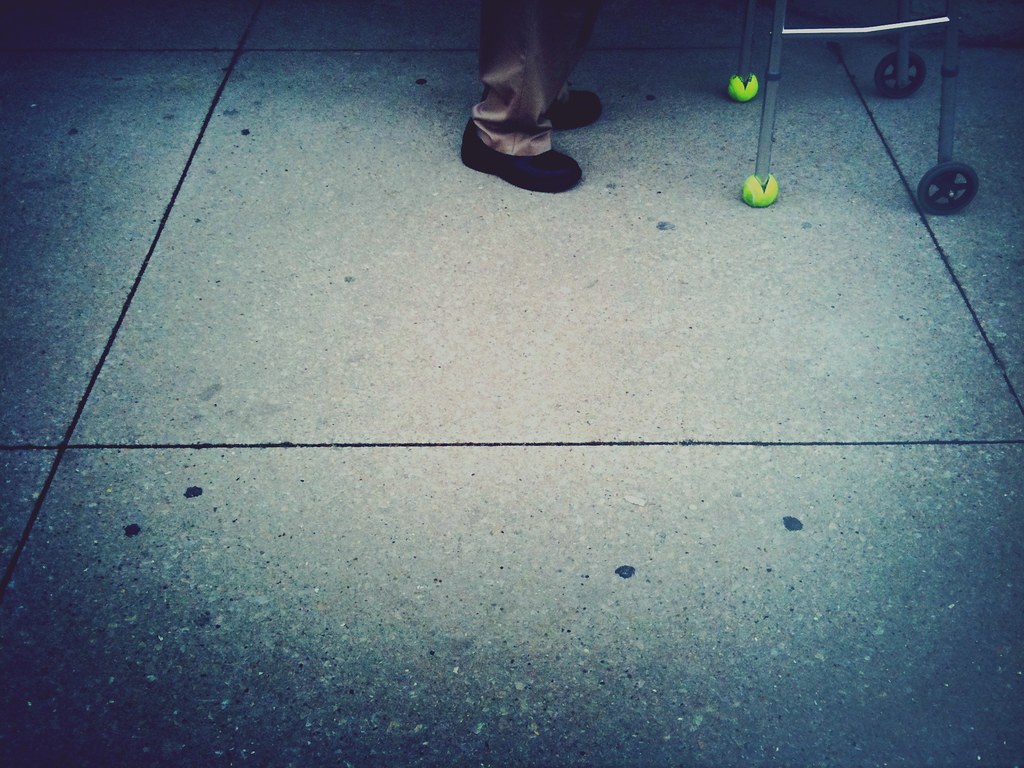With the advent of cameras in cell phones, this kind of instant photography has become a worldwide consumer activity that has even invaded our newsrooms.
Most of you probably have a camera on your cell phones. I've had a camera with my Blackberry phones and my current HTC Droid phone... yet as a photographer, I still covet the image quality of the iPhone's camera.
In this post I want to highlight a different type of diversity in photography - using the iPhone's camera as an artistic medium as practiced by photographer Jeremy Edwards.
D&B: Where are you from?
JE: I grew up in both Chicago and Kentucky. Now, after a few years in Asia, I live on the north side of Chicago.
D&B: How did you get started in photography?
JE: At 16, my father bought me my first film SLR - Canon Rebel. Shortly after, I found myself in makeshift studios and darkrooms shooting for newspapers, school projects, and later teaching photography to my classmates. It wasn't until I graduated from high school that I translated my photography into an intentional expression of art.
What cameras or equipment do you use?
JE: Now, I use a variety of cameras. Canon Rebel DSLR, Minolta SRTSC-II, Meikai 4351 SSN (toy), Polaroid Sun 660, and a Nikon L35AF. And of course, for the recent FROM THE POCKET project, I use my iPhone 3GS and only iPhone applications for processing.
Describe iPhone photography as an artistic medium as you know it to exist today. Is it being taken seriously by the art and photo establishments?
JE: The intention and motivation of the project is to remain true to the authenticity of spontaneous subjects and minimize unnecessary processing that I’m convinced washes out the organic beauty of simple subjects.
For the most part, as it stands today, the growing medium of iphoneography has yet to mature into a substantial art form that is respected by the entire art community. However, with the introduction of a few outstanding artists who use the iPhone has a tool for photography, that is beginning to change. I hope my project will serve as a valuable contribution to the growth of iPhoneography with artistic integrity.
D&B: What makes a photo taken from the iPhone worthy of being appreciated as anything more than frivolous, mobile entertainment? When using an iPhone camera, how is the photographer/subject relationship different than when shooting with standard cameras?
JE: Mobile photography is discrete. It offers a truly organic interaction with your subjects that other forms of photography cannot. Perhaps it could be considered frivolous, but as an artist, I'm not certain that is necessarily a bad thing. However, for many, iPhone photography will be merely a playful activity with a inartistic stigma. But that doesn't have to be the case.
If done well, I believe it sets us back 30 years to the point and shoot era, when post-processing didn't make the photo, but it was composition, lighting, and subject content. It re-introduces the beauty of the ordinary in our lives.
I feel that photography has been held hostage by the uber-rapid growth of technology and expensive equipment and processing software. The iPhone is a friendly blend of modern technology and point and shoot.
D&B: Is iPhone photography different than photography taken with any other camera phone?
JE: From my experience and interaction with other mobile photographers, the iPhone has different capabilities than most. I think the processing applications that are available for the iPhone more than likely sets it apart. But, for the most part, mobile photography is very similar across the board: discrete, intimate, and it forces the photographer to stay true to the rules of photography (composition, lighting, and subject content).
D&B: You're publishing a book on your iPhone photography - tell us about this project and what do you hope to achieve with it.
JE: The book is to be released soon. I've had to push it back more times than I have wanted. Not sure that I hope to achieve much with the release of the book. I think the goal was to highlight the growing medium with artistic integrity, and to do it well. Definitely not to make money. But, if a few people get their hands on it and inspired or motivated in any way, then I suppose it was well worth the time.
Labels: interview, iPhone
